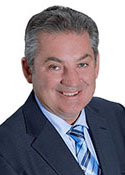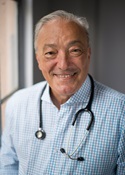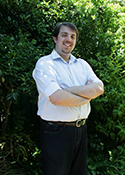Macarthur
Margin: Liberal 3.3%
Region: Western Sydney, New South Wales
In a nutshell: What was once a bellwether seat in Sydney’s outer west has become stronger for the Liberals at recent elections, but the latest redistribution has tilted the ground back towards Labor.
Candidates in ballot paper order

|
RICHARD HELTAY BAKOSS JAMES GENT RUSSELL MATHESON MIKE FREELANDER BEN MORONEY |
The seat of Macarthur on the south-western edge of Sydney once had a record as a bellwether to surpass Eden-Monaro, being held by the winning party at every election from 1949 to 2007, but it lately took a more conservative turn and stayed with the Liberals through the Rudd-Gillard period. The electorate is centred upon Campbelltown, 50 kilometres south-west of central Sydney, and encompasses suburban territory around the Hume Motorway and semi-rural areas to the north. Ongoing urban development makes this region prone to dramatic redrawing at redistributions, and the latest has been no exception. Macarthur has been drawn deeper into the suburbs, absorbing 40,000 voters around Ingleburn, Eagle Vale and Minto from Werriwa, while losing Camden and surrounding parts of the urban fringe to Hume. The exchange has been dramatically favourable to Labor, bringing the Liberal margin down from 11.3% to 3.3%. This has had disruptive consequences for the Liberal Party, with Macarthur MP Russell Matheson needing to be dissuaded from challenging Angus Taylor for preselection in Hume.
Macarthur extended considerably further to the south after its creation in 1949, when it ran from Camden through the Southern Highlands to southern coastal Illawarra. The latter areas were transferred to the new seat of Throsby when parliament was enlarged in 1984, and Macarthur was compensated with the northern end of the Illawarra around Bulli. It finally lost contact with the Illawarra in 1993, and gained a more clearly suburban orientation when the 2001 redistribution concentrated it around Campbelltown and Camden. The Liberal member through the party’s ascendancy from 1949 to 1972 was Jeff Bate, who ran as an independent at the 1972 election after losing preselection. The seat was then held for Labor during the Whitlam years by John Kerin, and for the Liberals during the Fraser years by Michael Baume. Both would return after their respective defeats, Kerin as member for Werriwa in 1978, and Baume as a Senator in 1984. The seat had three Labor members during the Hawke-Keating years: Colin Hollis from 1983 to 1984, when he moved to the new seat of Throsby; Stephen Martin from 1984 to 1993, when he moved to Cunningham after an unfavourable redistribution; and Chris Haviland from 1993 to 1996, when he lost his endorsement.
With the election of the Howard government in 1996, Macarthur was won for the Liberals by John Fahey, whose move to federal politics followed a spell as New South Wales Premier from 1992 until his government’s narrow defeat at the 1995 election. The redistribution in 2001 produced a familiar situation in which the Liberals were weakened in Macarthur by a transfer of low-income suburbs in outer Sydney, causing the sitting member to eye off the safer neighbouring seat of Hume. However, Fahey’s designs on Hume appeared set to meet successful resistance from its sitting member, Alby Schultz. Fahey was ultimately compelled to retire on health grounds, and his seat was contested for the Liberals by Pat Farmer, a former ultra-marathon runner noted for his 15,000 kilometre charity run round Australia after his wife died of heart failure. Farmer did outstandingly well to hold the seat for the Liberals with a swing in his favour of 8.7%, easily accounting for its notional Labor margin of 1.7%. A further 2.5% swing in 2004 boosted his margin to 11.1%, which he then needed every bit of to withstand a 10.4% swing to Labor in 2007.
Farmer alienated local opinion by moving to the expensive north shore suburb of Mosman after the 2007 election, and there was some surprise when he put his name forward again for preselection in 2010. He was soundly defeated in the ensuing party ballot by Russell Matheson, a police sergeant and the former mayor of Campbelltown. Redistribution had again left Macarthur with a notional Labor margin, but Labor’s standing in Sydney at the time of the 2010 election was such that Matheson was able to retain it with a swing in his favour of 3.5%. This was followed by a further swing of 8.3% in 2013, the eighth biggest of the election. Together with state Wollondilly MP Jai Rowell, Matheson is identified with a local party faction known as the “southern cartel”.
Matheson’s position was greatly weakened when draft redistribution boundaries were published in November 2015, slashing his margin in Macarthur from 11.4% to 3.0%. At the same time, the changes provided him with ready-made base of support in the neighbouring seat of Hume, which absorbed the southern cartel-dominated Liberal Party branch of Camden. Matheson’s determination to take on Angus Taylor in the safer seat unfolded against a backdrop of intensifying rivalry between the Right, of which Taylor is a member, and the increasingly ascendant moderate faction, to which the southern cartel had recently defected. However, the prospect of Taylor being rolled caused considerable consternation owing to his reputation as a senior ministerial prospect, and the lack of any absence of any corresponding expectations of Matheson. The situation was resolved after the Prime Minister promoted Taylor to an assistant minister position in February, and told Matheson he was expected to stay in Macarthur.
Labor’s candidate is Michael Freelander, a Campbelltown paediatrician.
Analysis by William Bowe. Read William’s blog, The Poll Bludger.


